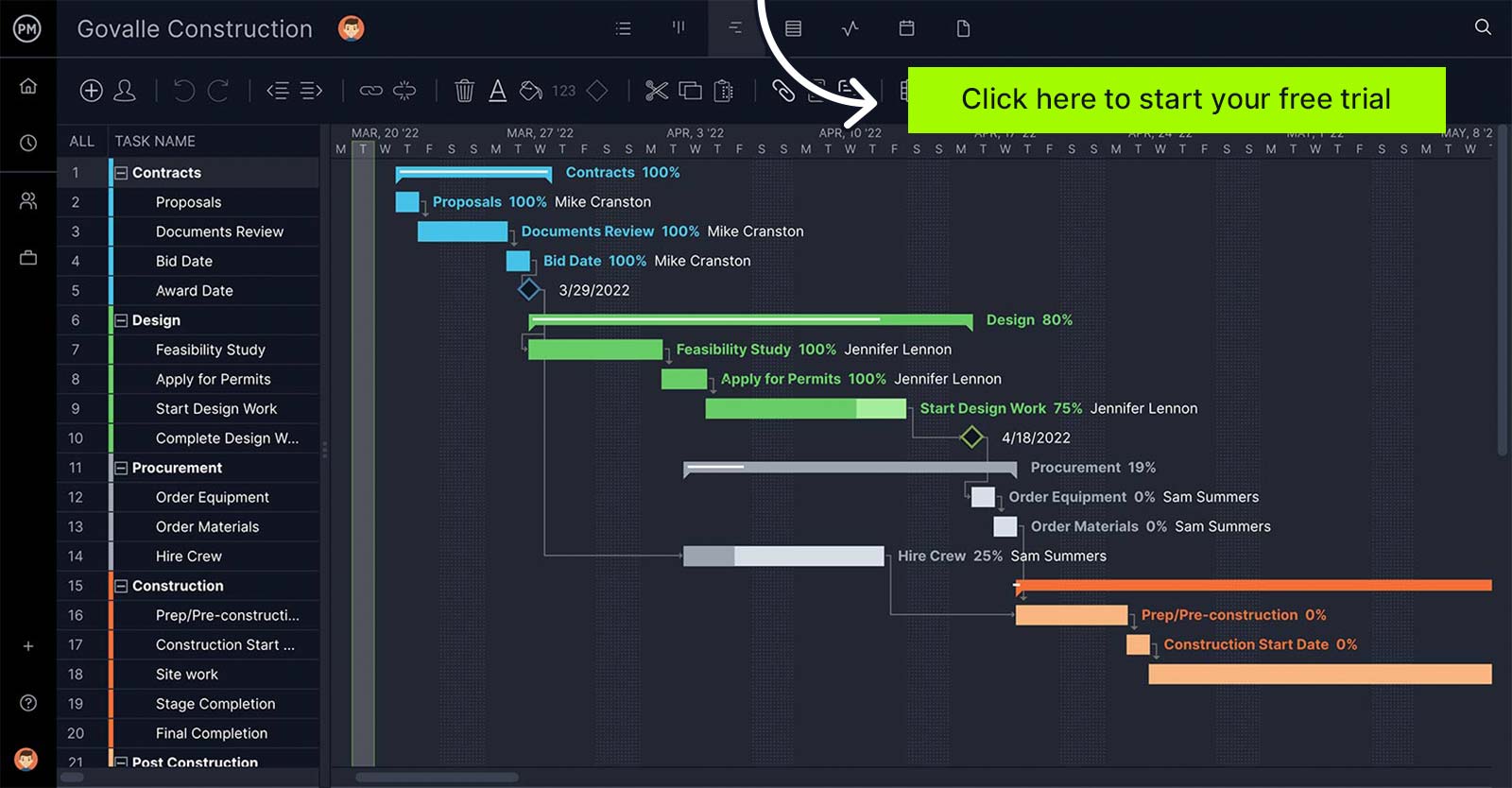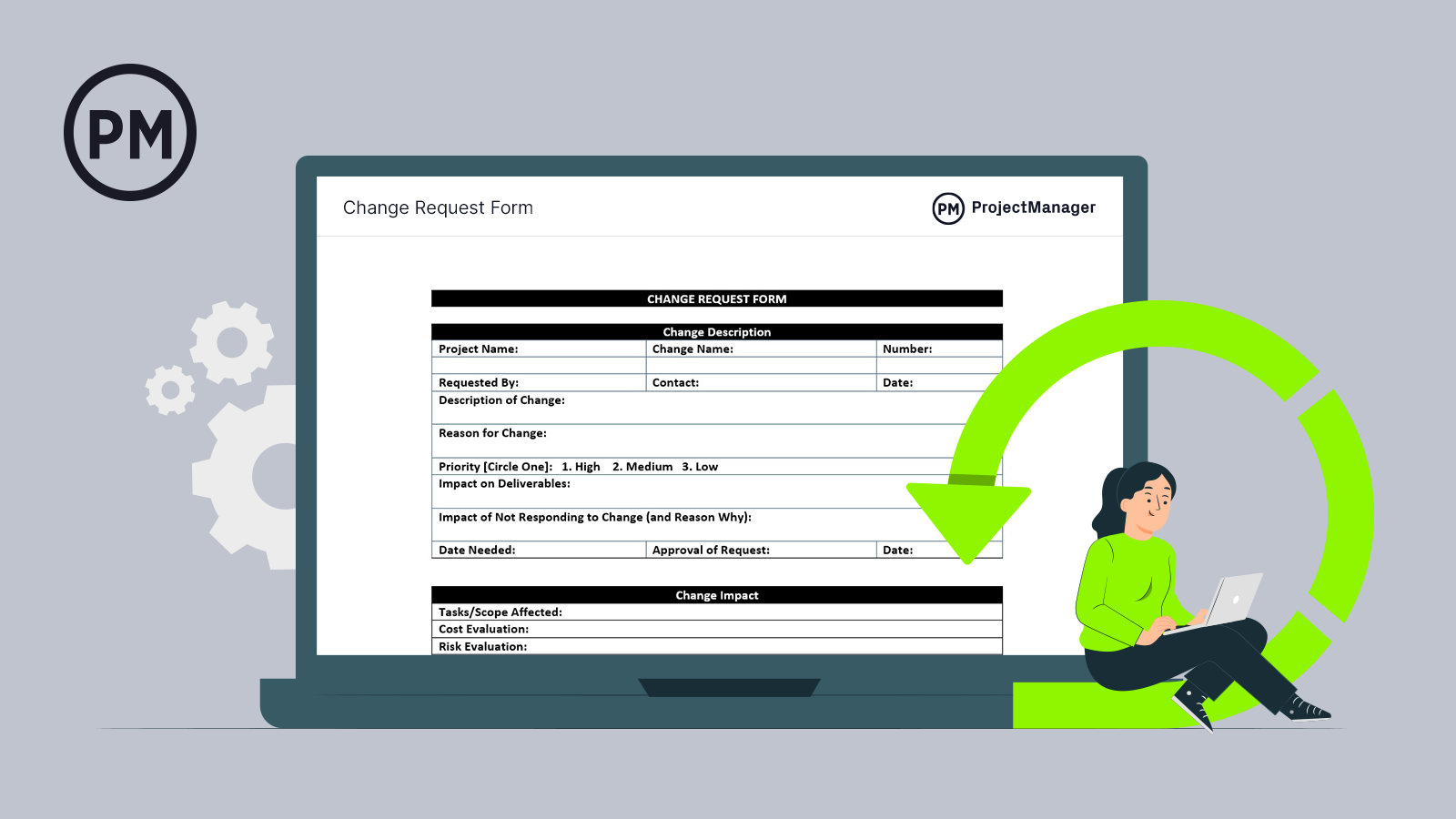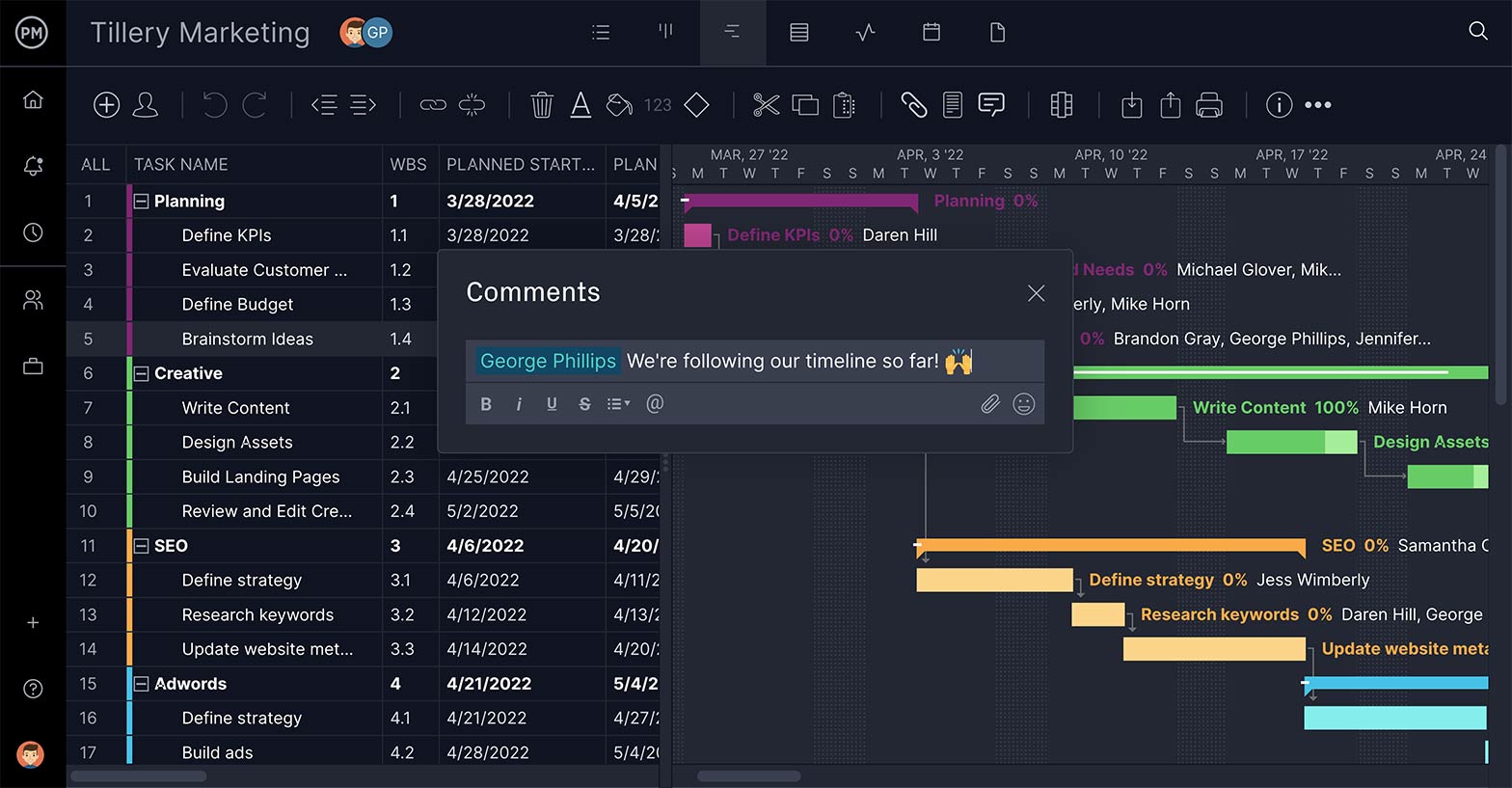We say it all the time — change is inevitable. This adage is as true for projects and organizations as it is for everything else. Change can feel like an inconvenience or a response to unexpected trouble. And while this does happen, a change request can also be completely natural, and even positive, in the grand scheme of things. Because, ultimately, change is evolution.
So, how can changes be used to your advantage in project management? We create a system to guide these changes. This system prevents confusion and disorganization which can sink and operate, and it all begins with a change request.
What Is a Change Request?
Change requests act as these formal documents and are a core component of a change management plan. These documents outline modifications to some aspect of the project or organization — usually at a high level, such as a project deliverable or organizational operations.
The requests for change can come from within or outside the organization, and while requested changes can vary wildly, the process for creating them is the same. This continuity simplifies the process of creating, submitting, monitoring and approving (or denying) them.
Change Request Form Template
Get started making change requests at your organization with this template. Our free change request form template for Word will help you describe the change, evaluate the impact of the change, establish a sign-off process and more. It’s the ideal way to integrate change management into your projects and business. Download yours today.

Types of Change Requests
Change requests can be sorted into different categories, depending on the objective of the change. Here are the four key types of change requests to be aware of. Each of these four can apply to both projects and organizations as a whole.
- Normal Change: A normal change request addresses a significant alteration to operations, existing systems, infrastructure, etc. This type isn’t uncommon, but it does imply substantial, far-reaching changes need to be made. And, as you can imagine, normal change requests often result in additional ones.
- Standard Change: A standard change request proposes a low-risk change that occurs often. As we’ve discussed, many changes are perfectly natural over the course of a project or in an organization. These changes can be thought of as evolution. They are proposals outlining what needs to be modified, but the modification itself will follow a preexisting system.
- Major Change: A major change request proposes a significant change that will require substantial financing. Major changes pose a high risk, but they can also reap high rewards. These changes don’t occur often, and if they’re handled poorly, they can do serious damage. That being said, they’re necessary to make extreme modifications.
- Emergency Change: An emergency change request is a high-priority proposal for immediate change. This type is generally the result of a mistake or something not going as planned and can be used to prevent these unexpected circumstances from wreaking havoc.
What Is the Purpose of a Change Request?
In any project or organization, there is the potential that processes or tasks will need to be changed. Change requests exist to officially document details about those aspects that need to be altered. Their purpose is to request a modification and control this change.
These modifications can be necessary when high-level goals and objectives and/or project deliverables change or are added on to. For example, a client may want to change the deliverables of a project, a company may want to expand its mission, an organization may want to improve communication or internal operations. The list goes on. Regardless of what the change is, change requests document the proposed modification.
These formal requests list all pertinent information and are then passed along to an individual stakeholder (or a board or comity of individuals) for approval. Change requests summarize everything they need to know and simplify how the change management process will progress.

What Should a Change Request Include?
No matter the kind of request for change is made, there are a few bases you should be sure to cover. Start with these core components and build out the rest of your change requests around them.
- Title
- ID Number
- Type of Request
- Source: Internal or External Request
- Short Description
Depending on the type of change or the organization or project, you may wish to include additional details. This is completely fine, but you’ll want to keep these additional sections short and sweet and be sure the format of each request is as consistent as possible.
How to Establish a Change Process
It’s important to have a concrete system of processing requests in place. This creates a set of steps anyone can follow and cuts down on errors. This will look different depending on the industry, organization or project, but there are some universal points they need to hit. Here are a few to focus on:
1. Decide What Change Requests Will Include
Change requests can impact many aspects of a project plan or even the entire organization. But, no matter what kind of requests are submitted, they should all contain the same components and answer the same questions. This consistency in formatting makes for better records and more thorough reporting.
Because consistency is so important, many organizations choose to use templates when creating one. These templates make it simple to find the information you’re looking for because you’re already familiar with the formatting. A template also ensures no details are left out.
2. Determine the Type and Scope of the Change Request
As we’ve shown, there are different types of change requests, each with its own defining characteristics. In order to submit and process one appropriately, you must know which type it is. A major change, for example, will be managed differently than a normal change.
All should include the same core information, but depending on the type of request, there will be some differences. One surefire way to decide what these differences will look like is by determining the scope of the request. In other words, what exactly will the change you’re requesting affect? How far-reaching will the change you’re making be?

Get your free
Change Request Template
Use this free Change Request Template for Word to manage your projects better.
3. Establish a Chain of Communication
Submitting a request is not the end of the process. In fact, submitting often only starts a longer conversation. Regardless of whether a change request is approved or denied, there will likely be some back and forth between the person submitting the request and the person responsible for reviewing it.
Because change requests do often start these conversations, it’s important to establish exactly how these “edits” will be discussed or questions will be asked. Each party must know who to speak to and how to voice their questions, concerns, criticism, etc. When there is a set communication plan in place, this cuts down on conflict and improves efficiency.
4. Define the Next Steps
When approved, it’s time to execute the resulting changes. This usually falls to many different individuals and can even involve different departments. Perhaps the most important part of establishing a change management process is deciding what will happen after a request is approved.
Although the changes being approved can vary widely, the steps after approval should look the same. This includes holding a meeting and completing necessary forms such as a change order. The key is having a system in place to take approved requests from documents and turn them into reality.
How ProjectManager Helps Manage Changes in Your Project
When creating and submitting change requests, it’s important to have the proper documentation tools. Throughout the course of a project, you will need to organize and store an array of documents so that everything is easy for anyone to find and nothing is lost. ProjectManager allows you to upload all the documents you need to your project, with unlimited file space.
And if you need to point out a specific detail on a change request, simply leave a comment in the document and tag the team member(s) you want to show. This eliminates the need to email PDFs. back and forth and puts all your correspondences in one space.

Keeping all of your change requests in one location also makes it easy to execute the changes themselves. Because these requests live in the same space as your project plan, schedule, dashboard, task management tools and more, you can make adjustments with only a few clicks and get to work immediately.
Related Change Management Content
- Free Change Management Templates for Excel and Word
- How to Make a Change Management Plan (Example & Template Included)
- Change Request: How to Submit, Manage and Execute
ProjectManager is a cloud-based software that manages changes to your project with features that guide you through every step. Identify what needs to change, plan the change and then track its progress all with the same tool. Assume total control of project changes by trying ProjectManager for free today.

